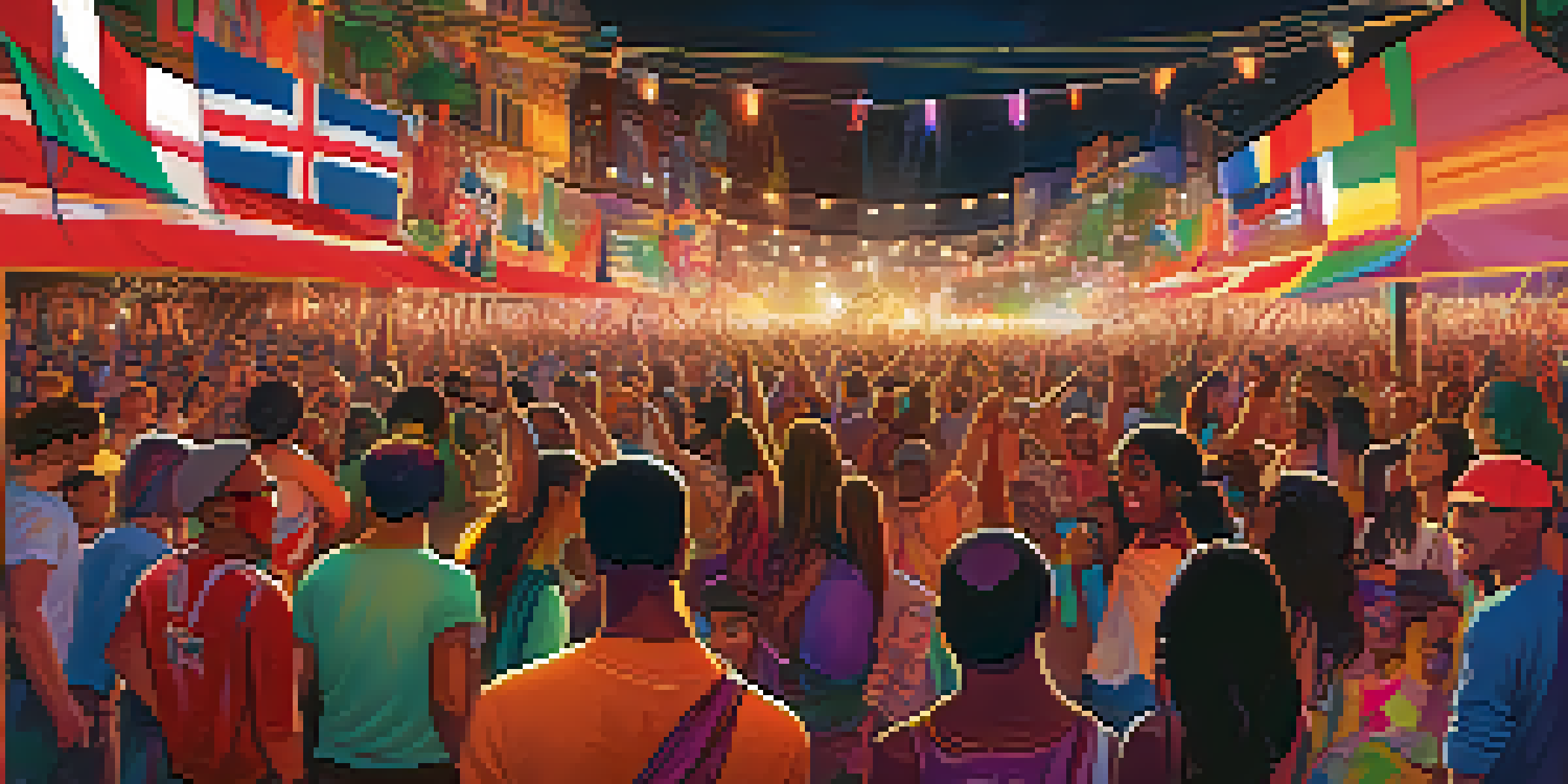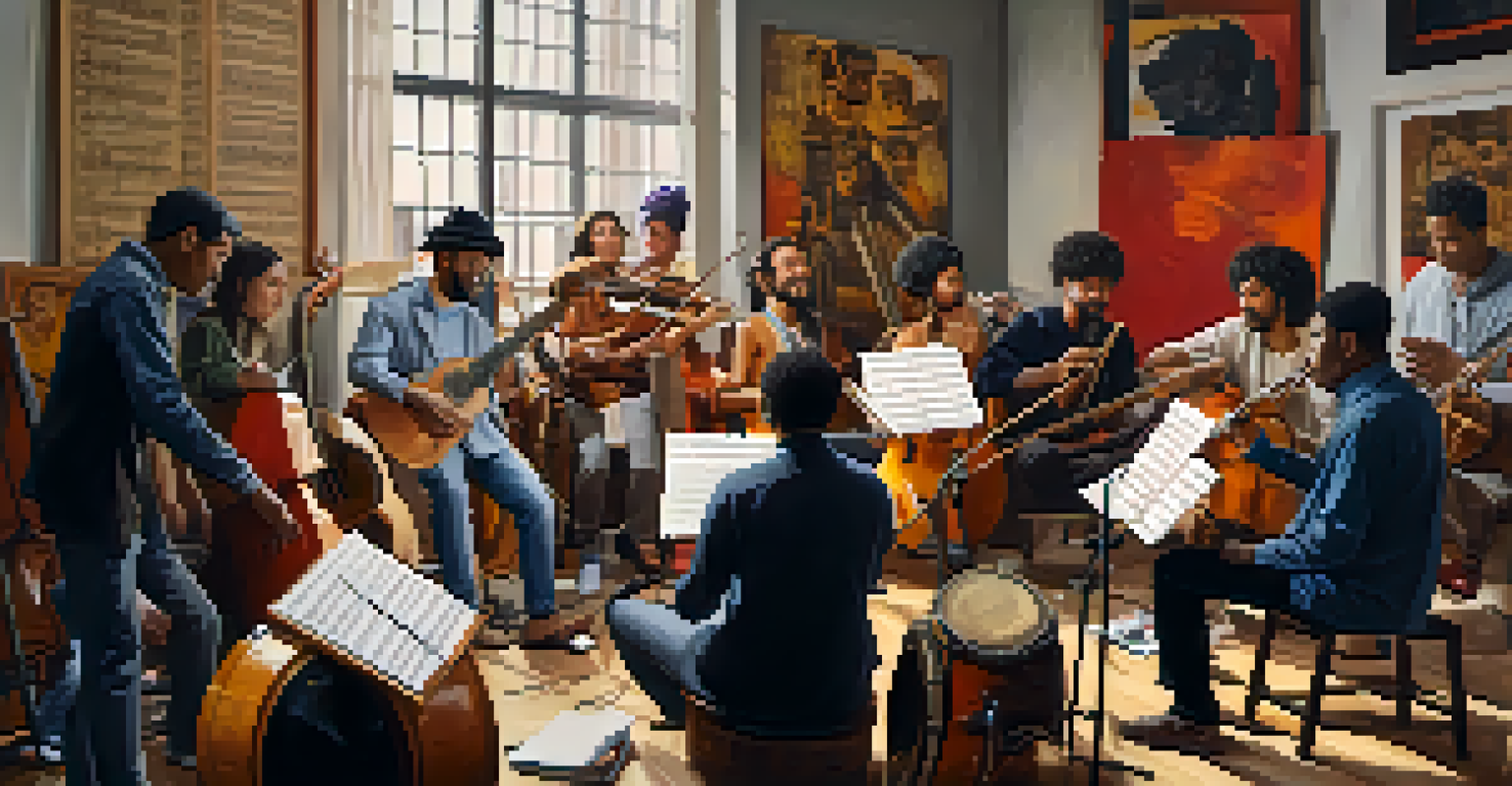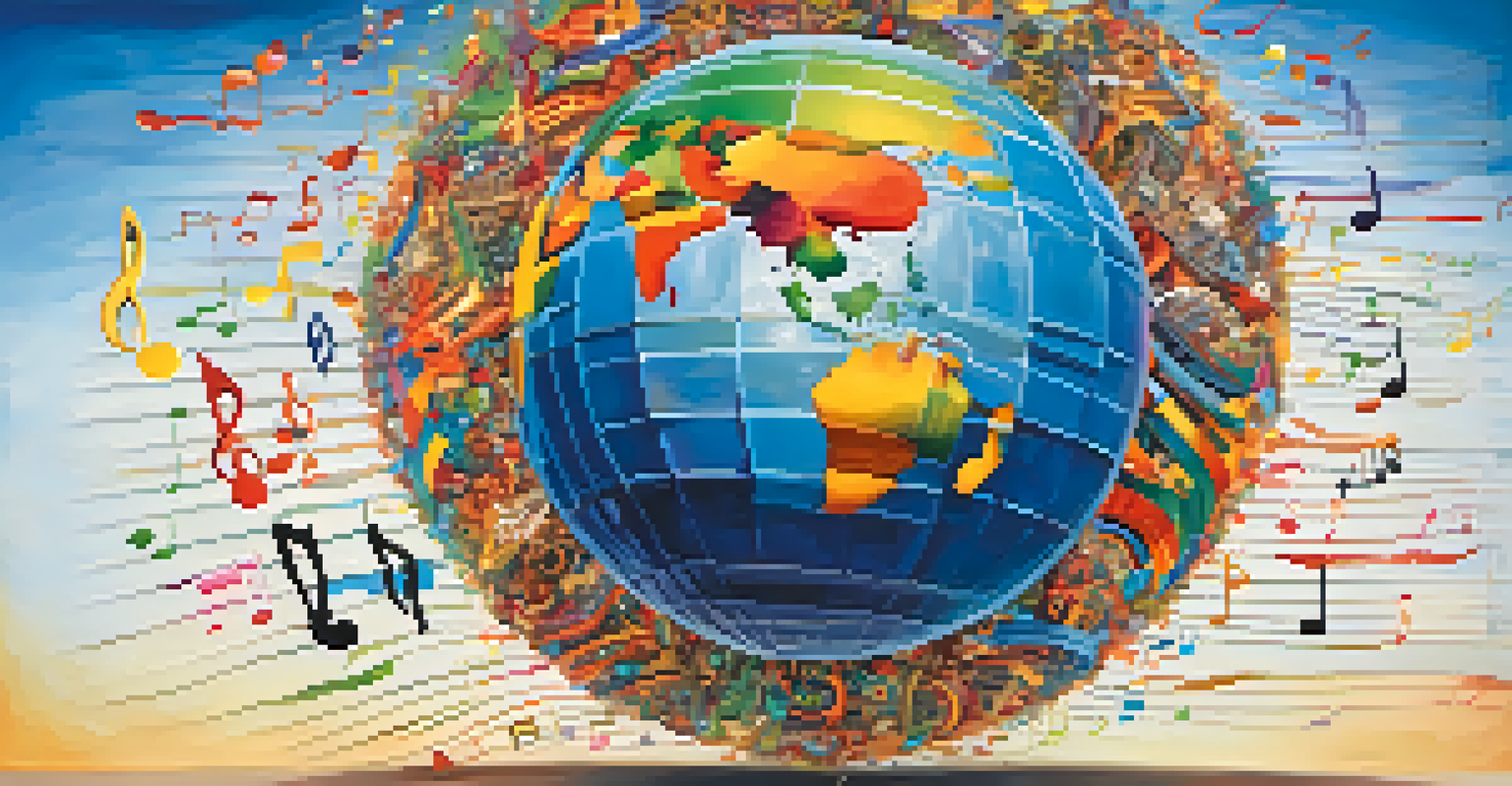Embracing Diversity: The Impact on Music Collaboration

Understanding Diversity in Music Collaboration
Diversity in music collaboration refers to the inclusion of different cultures, backgrounds, and perspectives in the creative process. This can mean working with artists from various genres, ethnicities, and experiences. By bringing different voices together, musicians can create richer and more innovative sounds.
Without music, life would be a mistake.
For example, consider the fusion of jazz with traditional African rhythms, which produces a unique auditory experience that neither genre could achieve alone. This kind of collaboration not only broadens the musical palette but also fosters a deeper understanding of different cultures.
Ultimately, embracing diversity in music is about recognizing the value of varied experiences and how they can enhance creativity. When artists unite from different backgrounds, they open doors to new ideas and collaborative possibilities.
The Role of Cultural Exchange in Music
Cultural exchange plays a crucial role in how diverse collaborations evolve. When artists from different backgrounds share their traditions and practices, they can inspire each other to explore new musical territories. This type of exchange transforms individual art forms into collaborative masterpieces.

Take, for instance, the global phenomenon of K-Pop, which blends elements of hip hop, R&B, and traditional Korean music. Artists like BTS have collaborated with musicians worldwide, showcasing how cultural exchange can create a global sound that resonates with fans everywhere.
Diversity Enhances Musical Creativity
Incorporating various cultural influences leads to richer and more innovative sounds in music.
Such interactions not only enrich the artists’ music but also promote understanding and appreciation among audiences. This mutual respect can lead to a more inclusive music industry as artists celebrate their differences.
Breaking Down Barriers Through Collaboration
Music has an incredible power to break down barriers and foster connections. When musicians collaborate across cultures, they challenge stereotypes and preconceived notions, paving the way for broader acceptance. Through their work, they communicate universal themes that resonate with diverse audiences.
Music is the universal language of mankind.
For example, the collaboration between Shakira and Wyclef Jean on 'Hips Don’t Lie' brought together Latin and hip-hop influences, creating a hit that crossed cultural boundaries. This not only highlighted the artists’ unique styles but also encouraged listeners to appreciate the richness of different musical traditions.
By breaking down these barriers, artists can create a sense of unity and shared experience. This helps to cultivate a music scene that is vibrant and inclusive, allowing fresh voices to emerge.
The Impact of Diverse Influences on Sound
Diverse influences can dramatically shift the sound of music, resulting in innovative and unexpected results. When artists incorporate elements from various genres or cultures, they create something entirely new that captivates listeners. This evolution of sound is a direct result of embracing diversity in collaboration.
Take the genre of reggae, which blends Caribbean rhythms with elements of rock and soul. Artists like Bob Marley have shown how these influences can create powerful music that speaks to social issues while also being danceable and enjoyable.
Cultural Exchange Fuels Collaboration
When artists share their traditions, it inspires new musical explorations and promotes understanding.
As artists continue to explore different influences, they push the boundaries of what is considered mainstream music. This not only keeps the industry fresh but also encourages other musicians to experiment with their sounds.
Fostering Innovation Through Diverse Collaboration
Innovation thrives in environments where diverse perspectives come together. When artists collaborate across cultural lines, they challenge each other to think outside the box and explore new creative paths. This kind of innovative spirit is essential for the evolution of music.
For example, the electronic music scene has seen a surge of collaborations that incorporate traditional instruments from various cultures, resulting in groundbreaking tracks. Artists like Major Lazer have effectively blended dancehall with electronic music, creating a unique sound that appeals to a global audience.
Such collaborations not only result in fresh music but also inspire other artists to merge different styles. This constant innovation keeps the music industry dynamic and relevant.
The Audience's Role in Embracing Diversity
The audience plays a pivotal role in the embrace of diversity in music. As listeners become more open to different genres and styles, they encourage artists to explore new collaborative opportunities. The demand for diversity in music can foster an environment where all voices are heard.
For instance, the rise of streaming platforms has given audiences access to a vast array of music from around the world. This accessibility allows listeners to discover and support artists they may not have encountered otherwise, promoting the appreciation of diverse sounds.
Audience Drives Diversity in Music
As listeners embrace diverse genres, they encourage artists to collaborate and take creative risks.
As audiences continue to seek out new experiences, they help shape the music landscape. This inspires artists to take creative risks and collaborate with others, ultimately leading to a richer musical experience for everyone.
Celebrating Diversity: Festivals and Collaborations
Music festivals often serve as melting pots for diverse artists and audiences, celebrating cultural differences through collaborative performances. Events like Coachella or Glastonbury showcase a wide range of genres, allowing musicians from different backgrounds to share the stage. This celebration of diversity fosters a sense of community and collaboration.
A great example is the Global Citizen Festival, which brings together artists from various countries to advocate for social change through music. These events not only entertain but also educate attendees about the importance of diversity and inclusion.

By highlighting diverse collaborations at these festivals, organizers create an environment where unity is celebrated. This encourages attendees to appreciate the richness of the music while also fostering a sense of global citizenship.
The Future of Music: A Diverse Landscape
Looking ahead, the future of music appears to be increasingly diverse and collaborative. As technology continues to bridge gaps between artists and audiences worldwide, the potential for innovative collaborations is limitless. This trend reflects a broader societal shift towards inclusivity and acceptance.
With platforms like TikTok and Instagram promoting artists from different backgrounds, new voices are emerging and gaining recognition. This democratization of music allows for a more varied range of sounds and styles, enriching the overall music experience.
As we embrace diversity in music, we can expect a future filled with creativity and collaboration that transcends cultural boundaries. This not only enhances the music industry but also connects people across the globe in meaningful ways.